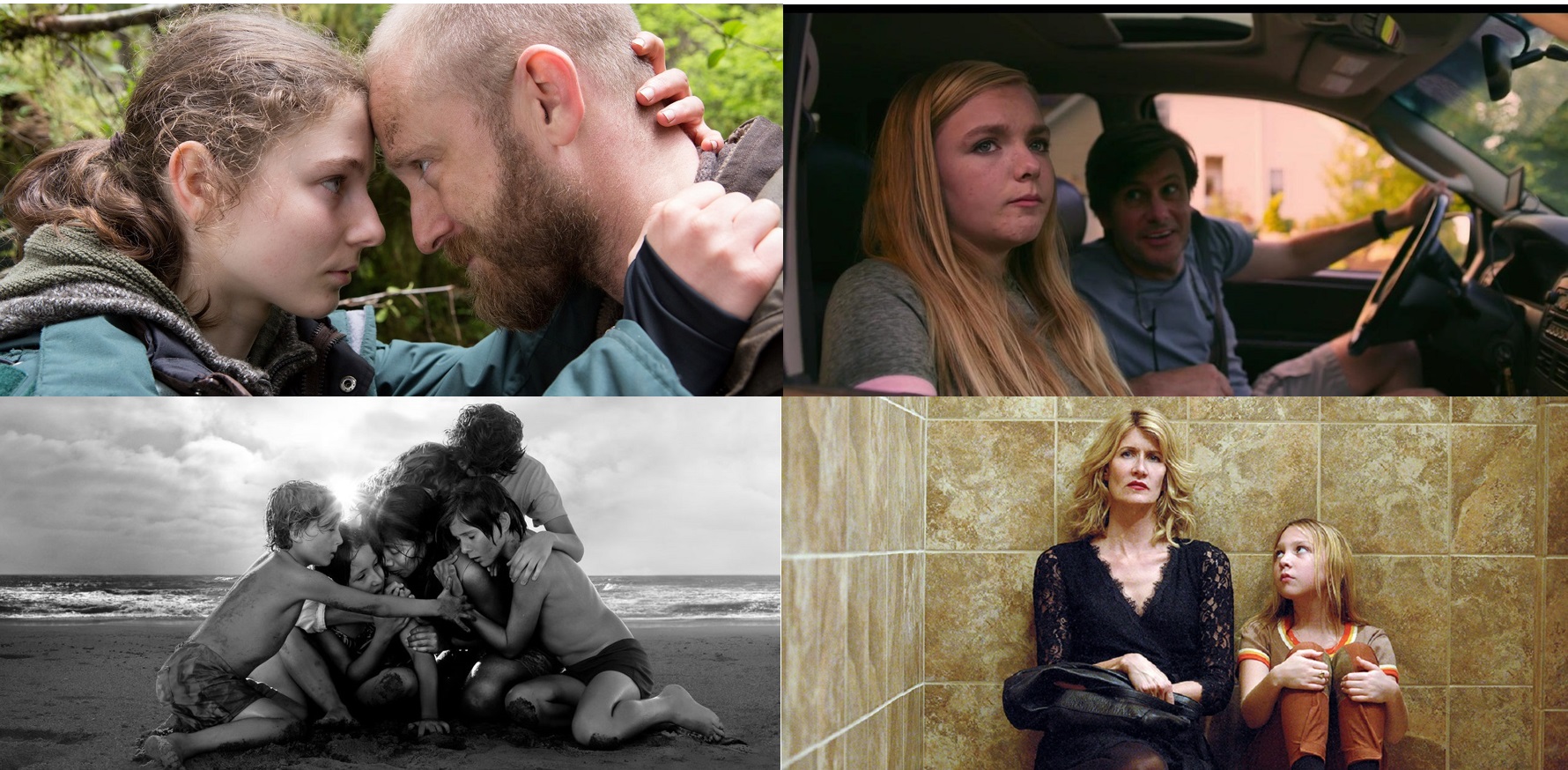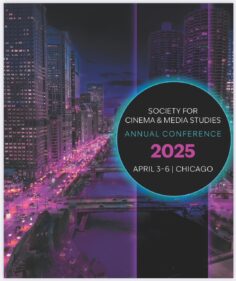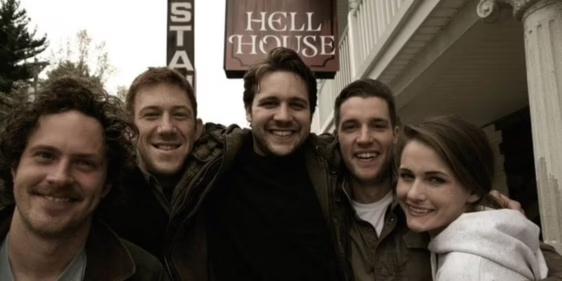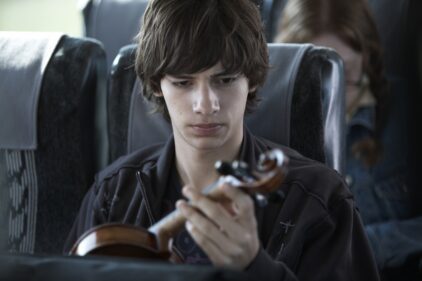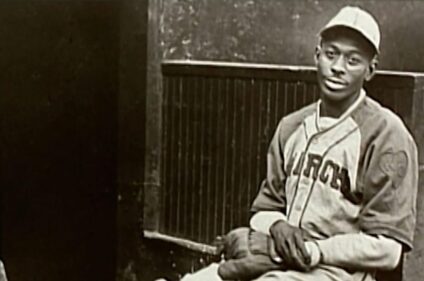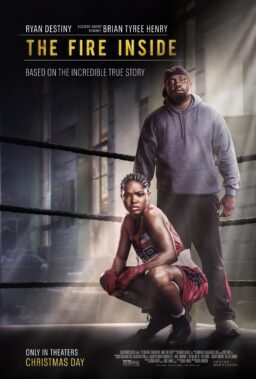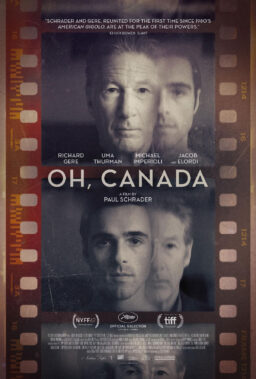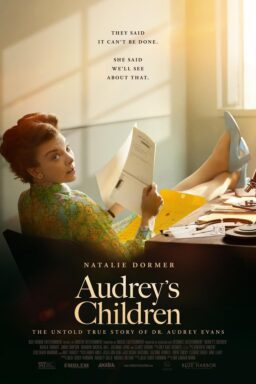For dutiful film critics preparing to mark their ballots, the final months of the year are nothing less than a cinematic avalanche. Studios do everything in their power to entice us into viewing their most prized work prior to our voting deadlines and “best of” lists. There’s no way any single person can watch and fully digest every single movie that comes out in a given year, but boy do the most devoted cinephiles give it their all, consuming multiple pictures after work hours or early in the morning.
You can’t merely enjoy movies to pull off such a feat, you must be obsessed with them and believe deeply in their importance. It’s not just a job or a hobby, it is one of the great purposes of my life to champion an art form that possesses the power of strengthening our connection with one another. In such divided and toxic times, the humanizing beam of a film projector is more vital and revitalizing than ever. And in many recent cases cited below, it reminded me of why I fell in love with visual storytelling in the first place.
Runners-up: “Capernaum,” “22 July,” “The Guilty,” “The King,” “Won’t You Be My Neighbor?”, “Jeannette: The Childhood of Joan of Arc,” “Hereditary,” “Memoir of War,” “You Were Never Really Here” and “Stan & Ollie.”
10. “Mary Poppins Returns”
In an era where Disney appears hellbent on churning out pointless yet highly profitable shot-for-shot remakes of their animated classics, the very notion of producing a sequel to the studio’s all-time greatest picture sounds like a surefire recipe for disaster. Yet what “Chicago” director Rob Marshall has achieved here will stand as a definitive example of how to honor a masterpiece. There is no attempt made to equal or improve upon Robert Stevenson’s 1964 marvel—after all, how does one top perfection? Yet with a running time clocking in just nine minutes shy of its predecessor, this buoyantly old school musical captures the innocence, whimsy and wonderment of “Mary Poppins” while offering its own spirited take on the material.
Emily Blunt is well-aware that she does not possess the indelible screen persona, let alone the pipes, of Julie Andrews, yet her balance of warmth and sardonic wit is impeccable for the title role, as is Lin-Manuel Miranda’s vibrance and Cockney-by-way-of-Neptune accent in the Bert-like role of lamplighter Jack. A team of veteran animators were brought out of retirement to create the film’s glorious hand-drawn sequence, while the “Hairspray” duo of Marc Shaiman and Scott Wittman penned nine original songs echoing the Sherman Brothers’ signature vaudevillian style. Worth the price of admission alone is the ever-ageless Dick Van Dyke, playing the son of the banker he brilliantly brought to life incognito in the first film. Marshall clearly drew upon his childhood memories of seeing “Mary Poppins” on the big screen, and this labor of love is sure to delight fans and newcomers alike. It certainly brought out the child in me.
Winner of Film Independent’s John Cassavetes Award during last year’s Spirit Awards ceremony, Antonio Méndez Esparza’s arresting film aims to capture nothing more than the relentless flow of “life itself.” The director used his script merely as a blueprint, enabling each scene to be formed organically in the moment, while guided by the experiences of his nonprofessional actors (who share the first names of their characters). Spirit Award nominee Regina Williams delivers one of the year’s best performances as a waitress struggling to provide for her troubled son (Andrew Bleechington), and baby daughter in Leon Country, Florida. I’ve watched Esparza’s film twice now, and its greatness reveals itself even more upon second viewing, upending the biases we may have developed about certain characters.
The first time around, I tended to view events from Andrew’s perspective because that was how they were framed by the camera. His refusal to trust his mother’s boyfriend (Robert Williams) is understandable, since his own dad’s incarceration has given him little reason to trust father figures, though his methods of ousting him from the house are no different from that of the white family who attempt to kick the boy out of their affluent park, even as he poses no threat to them. All of the film’s major conflicts arise from a stubborn reluctance of its characters to communicate with one another. The poignant final shot suggests that our estrangement can be mended the moment we choose to lock eyes and listen to each other, allowing our voices to rise above the deafening cries of our presumptions.

8. “The Tale”
When Lady Gaga appeared on Stephen Colbert’s late night show this past October, she delivered a stirring defense of Christine Blasey Ford, the psychologist who charged Brett Kavanaugh of sexual assault prior to his confirmation as a Supreme Court justice. “If someone is assaulted or experiences trauma, there is scientific proof that the brain changes,” noted Gaga. “It takes the trauma and puts it in a box, files it away and shuts it so that we can survive the pain.” It may take years for that box to be reopened, as evidenced by multiple survivors of the abuse administered by Olympics doctor Larry Nassar. Taped testimonials delivered by these women and girls during his trial, and subsequently uploaded on YouTube, were humbling in their bravery. The same can be said of this blistering narrative memoir from documentarian Jennifer Fox, who revisits an episode from her youth that she had kept buried for decades.
While interviewing rape victims for her latest project, Jennifer (Laura Dern) is triggered into remembering the intimate relationship she developed with the running coach (Jason Ritter) and instructor (Elizabeth Debicki) at a horse-riding camp when she was only a little girl (played with heartbreaking innocence by Isabelle Nélisse, sister of “Monsieur Lazhar” star Sophie Nélisse). Rather than accompany Dern’s scenes with routine flashbacks, Fox finds ingenious ways of having the heroine enter her own past, interrogating the occupants of her memories as if they were the subjects of her latest documentary. Dern’s late “Rambling Rose” co-star John Heard gave one of his final performances as the older version of Ritter, who is publicly shamed in a sequence that registers as a rallying cry of the #MeToo movement.
7. “Custody”
There was no horror film in 2018 that tested my nerves quite like this Hitchcockian nightmare from Xavier Legrand, an incredibly gifted first-time feature director from France. Billed as a domestic drama, I was prepared for something more akin to Asghar Farhadi’s “A Separation,” as a divorced couple, Antoine (Denis Ménochet) and Miriam (Léa Drucker), battle in court over the custody of their young son, Julien (Thomas Gioria, in one of the most astonishing debut performances I’ve ever seen). At first, my sympathies leaned toward the father, whose foiled bids to connect with Julien are relatable—until his face hardens and he begins to show his true colors. Ménochet slyly straddles the line between frustrated sad sack and frightening monster, causing us to feel as perpetually on edge as Julien, never certain of his next move.
In every tremulous motion and agonized glance, Gioria conveys the volatile atmosphere of white-knuckled fear his father maintained at home. Merely being in Antoine’s presence is enough to give Julien PTSD, and when he attempts to make a run for it, he quickly realizes there is only so far he can go. In a superb instance of juxtaposition, Legrand cuts from Julien’s older sister (Mathilde Auneveux) belting out “Proud Mary” at a birthday party to the violence that threatens to erupt between Antoine and Miriam in the parking lot. Then we arrive at a climatic sequence on par with the finale of Hitchcock’s “Rear Window,” as Legrand’s Oscar-worthy sound designers create a harrowing sense of impending doom with the subtlest of repetitions. Only at the final fade out will you allow yourself to take a breath.

6. “Leave No Trace”
A list of the year’s greatest achievements in acting wouldn’t be complete without Thomasin Harcourt McKenzie’s extraordinary lead performance in Debra Granik’s quietly shattering drama. Having already won over New Zealand audiences with her endearing web series, “Lucy Lewis Can’t Lose,” here McKenzie goes toe-to-toe and nose-to-nose with the sublime Ben Foster, and proves to be every bit his equal. Foster’s character of Will has the same first name as the role that the actor played in Oren Moverman’s equally great war-themed film, “The Messenger,” about an injured soldier assigned to inform families that their enlisted loved one has passed. The man Foster embodied in that film was named after one of the soldiers he met during his research, so it’s only appropriate that the Will he portrays in Granik’s film is also a veteran haunted by ghosts from the past.
The picture is deeply effective in part because none of Will’s demons are ever spelled out in an expositional monologue. So much can be gleaned simply through his behavior, such as how he winces at the sound of propeller. Choosing to raise his daughter, Tom (McKenzie), in the wilderness of Portland, Will has carved out a manageable life for himself. The strength of the bond between him and Tom endures until the modern world comes crashing upon them, forcing the pair to reevaluate what direction they want to take in life, and whether it will be the same one. McKenzie never overplays a single note of her character’s journey, remaining strong for her dad even while fighting back tears. It’s the restraint of her work that left me with a lump in my throat.
5. “Muppet Guys Talking”
For lifelong Muppet fans, Frank Oz’s euphoric documentary has been the gift that keeps on giving. It premiered exclusively online this past March, enabling the legendary Muppeteer-turned-director to connect directly with viewers, while providing those who sign up for a membership with enough deleted scenes to fill a separate feature. Taken altogether, this footage paints an invaluable portrait of Jim Henson’s genius, in terms of both his visionary creations and his knack for being “a harvester of people.” Oz (Miss Piggy, Grover, Fozzie Bear) joins four of his fellow “Muppet guys”—Dave Goelz (The Great Gonzo), Fran Brill (Prairie Dawn), Bill Barretta (Pepé the King Prawn) and the late Jerry Nelson (Count von Count)—for a lively chat about the process of puppeteering and the painstaking effort that must be expended in order to achieve the most fleeting yet crucial nuance. It’s fascinating to watch the performers break down the origins of their iconic characters, and how they were inspired by aspects of their own lives.
Yet what makes the film truly great is the way in which Oz and his wife, executive producer Victoria Labalme, resurrect the humanistic spirit of Henson, enabling his worldview to reach beyond the barriers of show business and prove utterly universal in its relevance. Acknowledging that the Muppets’ signature style is less than polished, Oz keeps the picture loose and alive, refusing to conceal the cameramen scrambling to capture their subjects’ unscripted banter. The performers and audiences that Henson brought together through his artistry are his everlasting symphony, and this onscreen quintet is enduring proof of that. And if you like 1981’s “The Great Muppet Caper” now, just wait till you get a load of the behind-the-scenes stories. It’s one of the most mind-boggling feats in cinema.
4. “First Reformed”
With this richly disquieting film—his finest since 1985’s “Mishima: A Life in Four Chapters”—Paul Schrader proves himself to be a master of “slow cinema,” and like the tortoise, he has outpaced every impatient hare in his path. Moviegoers unfamiliar with this term may assume that it promises little more than a dull slog, but that couldn’t be further from the truth. If anything, this genre’s contemplative nature proves to be far more transfixing than films so breathless to entertain that they forget to earn our investment. The austere filmmakers that Schrader pays homage to throughout the picture—notably Robert Bresson and Carl Dreyer—are interested in withholding certain elements, refusing to utilize techniques that viewers have come to expect, such as a quick editing pace or varied coverage like over-the-shoulder shots.
Alexander Dynan lenses the film in the same compressed aspect radio as Paweł Pawlikowski’s “Ida”—1.37:1—limiting the camera movement almost entirely to scenes that jump from the temporal plane to the cosmic realm, escaping the bonds of reality. Whereas Schrader’s “Taxi Driver” followed a disillusioned veteran whose plans to wreak havoc on a world he believes to be diseased are foiled by the plight of a 12-year-old prostitute, “First Reformed” is about a disillusioned military chaplain-turned-pastor whose plans to wreak havoc on a world he believes to be diseased are disrupted by the plight of a pregnant woman named Mary. Ethan Hawke delivers the performance of his career as Toller, a clergyman with self-righteous convictions fueled primarily by his personal demons. Like Dietrich Brüggemann’s “Stations of the Cross” (a 2014 German masterwork that Schrader and I both revere), this movie is a rebuke to the fallacy that self-destruction is tantamount to spiritual transcendence.

3. “Roma”
No director makes my jaw drop quite like Alfonso Cuarón. His latest movie left me so stunned that I remained pinned to my seat throughout the entirety of the credits, which end with the Buddhist chant, “Shantih Shantih Shantih.” This invocation of peace—in body, speech and mind—was memorably repeated in Cuarón’s “Children of Men,” a 2006 thriller that horrifyingly foreshadowed the current refugee crisis. That film contained two extended sequences of continuous movement—one set in a car under siege, the other on war-torn streets—that are among the most spellbinding triumphs of cinematography, choreography and effects in the history of cinema. Cuarón’s new film culminates with a bravura set piece on par with those others, yet that’s only one aspect of its greatness.
Like “Children of Men” and “First Reformed,” this deeply personal tour de force assesses the challenge of bringing new life into a chaotic world. It is also a black-and-white valentine to the Mexico of Cuarón’s childhood and the maid who nurtured him, embodied by Cleo (newcomer Yalitza Aparicio). As she finds her own life paralleling that of the middle-class woman she works for, Cleo begins to feel increasingly conflicted about her own future, as well as that of her unborn baby. Having learned a wealth of techniques from his regular DP, three-time Oscar-winner Emmanuel Lubezki, Cuarón takes charge of the camerawork this time around, and his eye for composition (albeit less restless) is every bit as audacious. A pair of visual motifs involving water and airplanes resurface in endlessly provocative ways, while two prolonged scenes—viewed from static angles—blur the action in the background, marrying two moments of inevitable heartache. I have rarely heard an audience react so audibly to the art of mise-en-scène as when I saw this film with a sold-out crowd during the opening night of its theatrical run in Chicago. If you see only one movie on the big screen this holiday season, make it this one.
2. “Minding the Gap”
In the monumental 52-year legacy of Chicago’s production company Kartemquin Films, none of its documentaries have impacted me on as personal a level as this astonishing debut feature from Bing Liu. While filming his longtime friends Keire and Zack as they took part in their cherished hobby of performing bruising stunts on their skateboards, Liu began to see a potential film materialize as he held the camera on their faces. “This place eats away at you,” says Keire of their hometown, Rockford, Illinois. He relishes the fleeting sense of control he sustains while skating, until he wipes out. Sure, the hobby may hurt him on occasion, but so did his dad, and he still loves the old man, though it’s telling that Keire finds catharsis in stomping on his boards until they splinter.
The fact that all three men are victims of domestic abuse is alarming but also quite commonplace in a town where nearly half the population is paid below the minimum wage, and where the residue of violence clings to the interior of houses that were meant to comfort and protect. “I saw myself in your story,” Liu explains to Keire, who likens the experience of making the movie to “free therapy.” As the filmmaker struggles to come to terms with the wounds inflicted by his own upbringing, he starts to see echoes of his abuser in the increasingly unsettling behavior of Zack. When Liu films his mother and simultaneously confronts her about the abandonment he felt as a kid, he keeps a separate camera fixed on his face, drawing attention to his own inability to break free from the pain of his past. Assisted by co-editor Joshua Altman, Liu weaves these stories together, forming a seamless tapestry of anguish and catharsis that culminates in an extended montage so deftly executed, it left me in awe.

1. “Eighth Grade”
As a bullied student in eighth grade, what I desired more than anything was to become a director of films that would make kids like me feel less alone. Now, with his first foray into filmmaking, Bo Burnham has made the movie I’ve spent nearly two decades hoping would one day exist. The film’s heroine, Kayla, is a lonesome soul bereft of an extracurricular outlet. Though her graduation from junior high is only one week away, every second in that soul-crushing environment feels like an eternity. So she turns to the world that didn’t exist when I was her age, the one that beckons to her from the cool glow of her laptop and phone. Burnham, who first garnered a global audience via his comedic YouTube videos, honors his protagonist by refusing to play her feelings for laughs. As portrayed by 15-year-old Elsie Fisher, Kayla emerges as one of the most compelling and vividly realized movie characters I’ve ever encountered. My heart broke every time the camera lingered on her face—untouched by an artificial Hollywood sheen—as she struggled to contain her embarrassment behind an expression of optimism.
The screenplay by Burnham doesn’t have an ounce of condescension, and the laughter that it generates—which is plentiful—arises out of recognition rather than ridicule. These are the years where attentive parenting is utterly essential, and Kayla is fortunate enough to have a father, Mark (Josh Hamilton), who may exasperate her with his persistent prying, but has a limitless reservoir of empathy and understanding. When Mark’s words finally register for Kayla during a lovely sequence set around a campfire, they affirm her sense of belonging in the world. As he tells his daughter, “You make me brave,” I couldn’t help agreeing with him. There is nothing braver than a middle schooler who dares to be human. What makes “Eighth Grade” the best film of 2018 is the way it makes Kayla’s anxiety resonate on a level that transcends all age, race, gender, nationality and culture. With petulant bullies elected to our highest offices, and technology breeding an addiction to constant approval, it goes without saying that our world has currently succumbed to an eighth grade mentality. You no longer have to be 13 in order to feel trapped in junior high.

